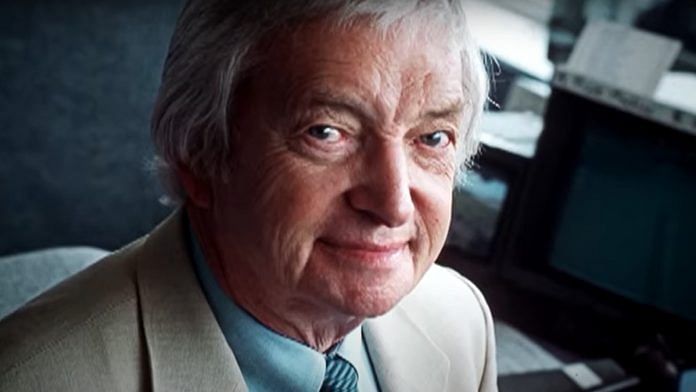Spinners take time to settle, especially in Tests. They generally come into their own in the middle of a tournament, more so if the series is being played in away conditions. Australia’s tour of India in 1956 started at the Chepauk, with India playing eight front-line batsmen. Leg-spinner Richie Benaud was playing his first Test on Indian soil. By the time India’s score moved close to hundred, Benaud had induced three false strokes from Vinoo Mankad, Pankaj Roy and Polly Umrigar. Benaud didn’t stop here. His next victim was one of India’s most technically equipped batsman of all time — Vijay Manjrekar. It must have taken some skill for Benaud to have Manjrekar plum leg before the wicket. With India’s greatest leg-spinner Subhash Gupte’s wicket, Benaud had taken seven in the innings. India were bowled out for 161. Apart from Gupte, the team had three spinners in the line-up — Vinoo Mankad, Ghulam Ahmed and Jasubhai Patel. But it was Richie Behnaud who extracted more purchase from the wicket. Australia won the Test by an innings and five runs.
In the next Test at Brabourne Stadium, Benaud took the wicket of a well-set Manjrekar in the first innings. In the second innings, he cleaned up the top order – Vinoo Mankad and Pankaj Roy. Australia dominated the match, largely due to Benaud, even though it didn’t win it.
The third and final Test of the series was at the Eden Gardens. By the time the first innings ended, Indians were in the driver’s seat. India had bundled out Australia for a mere 177, thanks to the brilliant bowling of Ghulam Ahmed. The Australian bowlers were under pressure to dismiss the Indians. Benaud first had Nari Contractor leg before and then took the prized Vijay Manjrekar yet again. He then took the next three wickets of Mankad, Ramchand and A.G. Kripal Singh to rattle the Indian batting line up. But India still had its stumper Narendra Shankar Tamhane. Anyone who could hold a place in the Mumbai Ranji Trophy team during 1950-60 was a world-class player. Tamhane was a capable batsman. But Benaud bowled a beauty that knocked Tamhane’s middle stump. Benaud ended up with six wickets in the innings.
Also read: Imran Khan paid no heed to PCB flaws, he was obsessed with foreign model of cricket
The Aussies gave India a target of 231 in the fourth innings and Benaud had his task cut out. He bamboozled Umrigar, Mankad and Manjrekar to begin with. He then clean-bowled A.G. Kripal Singh and Tamhane with beautiful deliveries. Benaud took five wickets in this innings to end up with match figures of 11/105. Australia won the Test and the series, as a result of Benaud’s performance. Benaud took 23 wickets in three Tests in his first series on Indian soil, a giant feat for a player with no previous experience of bowling on Indian pitches.
Benaud’s next stint on the Indian subcontinent came three years later when Australia toured Pakistan in 1959. The first Test was at Dhaka. Pakistan had in its ranks its first non-Muslim cricketer to play Test for the country. Wallis Mathias was Catholic by birth and belonged to Karachi’s Goan community. The Portuguese Goans had arrived in Karachi in the 1820s to build the shipping industry. The community had sailed from Goa to Karachi and had formed the Karachi Goan Association that still exists. Wallis Mathais is perhaps the most famous person from the community in the history of Pakistan. His cricketing skills were at test against Benaud in that 1959 match at Dhaka. Mathais came second best that day. He was caught-and-bowled by Benaud.
When Wazir Mohammad walked in to bat, his team was banking on him to dig in at the wicket. But Benaud ensured Wazir didn’t stay for long. In the second innings, Benaud did the unthinkable. He went through the defences of the world’s most solid batsman, Hanif Mohammad. If television had existed back then, it would have been a sight to see Hanif Mohammad being clean bowled Benaud took eight wickets in the match and Australia won by the same number of wickets. Benaud took further 10 wickets in the series.
In 1959 again, Benaud took five wickets in the second innings of the first Test at Feroz Shah Kotla, ensuring an Australian victory over India. In the 4th Test of the series, Benaud made an invaluable contribution in yet another decisive victory by taking eight wickets.
Also read: Ian Chappell defied ‘ugly Australian’ myth. His cricketing style was hard but fair
Richie Benaud played eight Test matches in India in which he picked up 52 wickets. Among these were some of India’s finest batsman — from Vinoo Mankada and Vijay Manjrekar, to Pankaj Roy, all of whom were dismissed cheaply, on innumerable occasions. His record as a spinner in India is second to none.
When Ritchie Benaud died, the MCC flag at Lord’s was at half-mast in the honour of not just one of game’s greatest players and captains but also greatest-ever cricket broadcaster. The Australian government led by then Prime Minister Tony Abbott had proposed a State funeral to the family of Benaud. The offer was declined by the family in keeping with Richie’s wishes of a low-key private family funeral.
Richie Benaud’s voice behind the commentary box was the most respected that the game of cricket has ever heard.
Kush Singh @singhkb is the founder of The Cricket Curry Tour Company. Views are personal.
(Edited by Anurag Chaubey)



